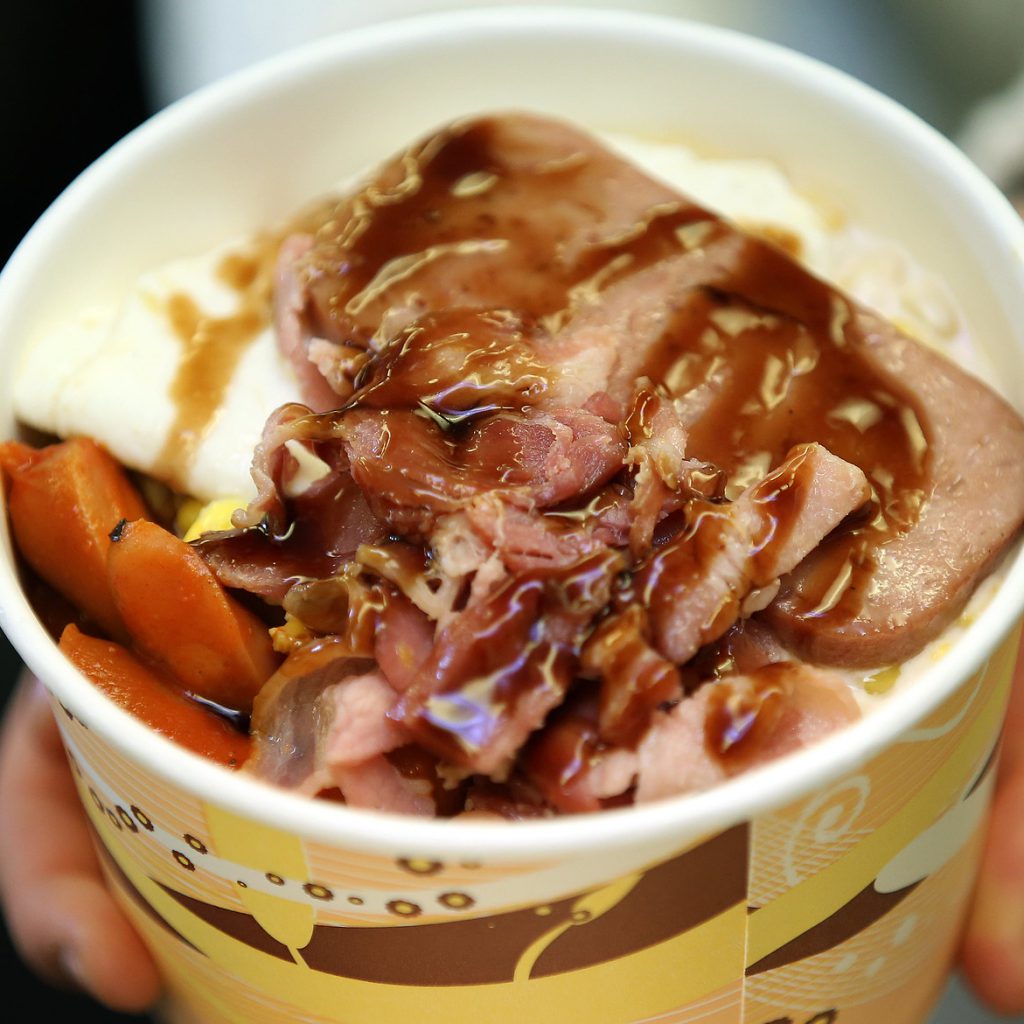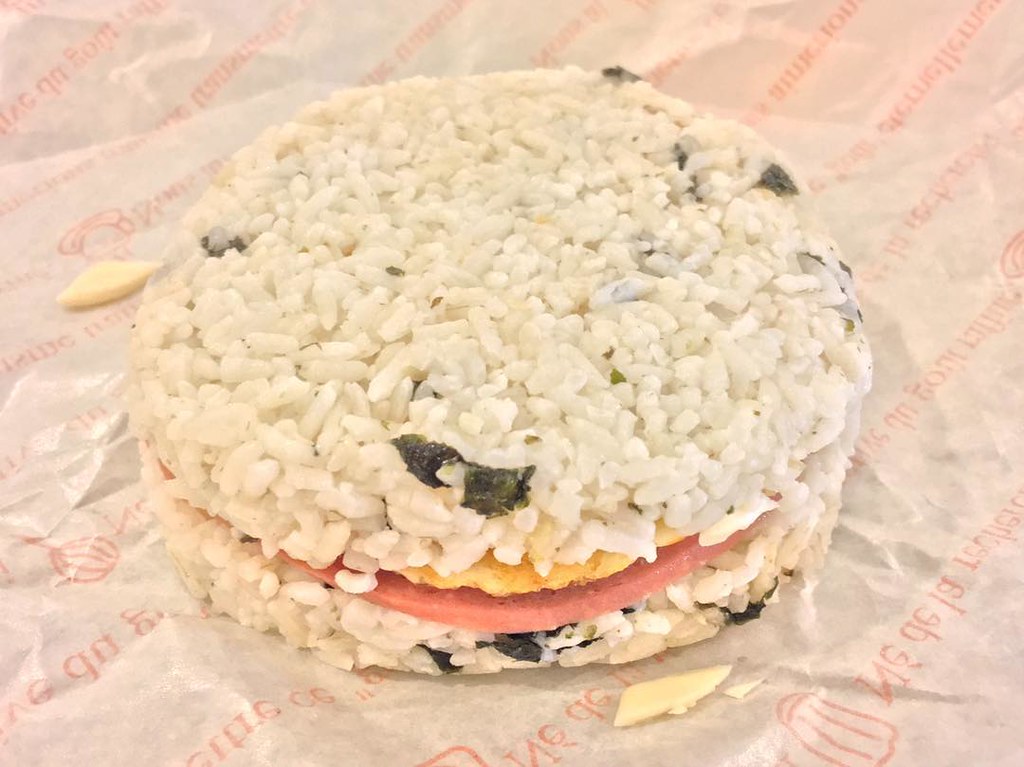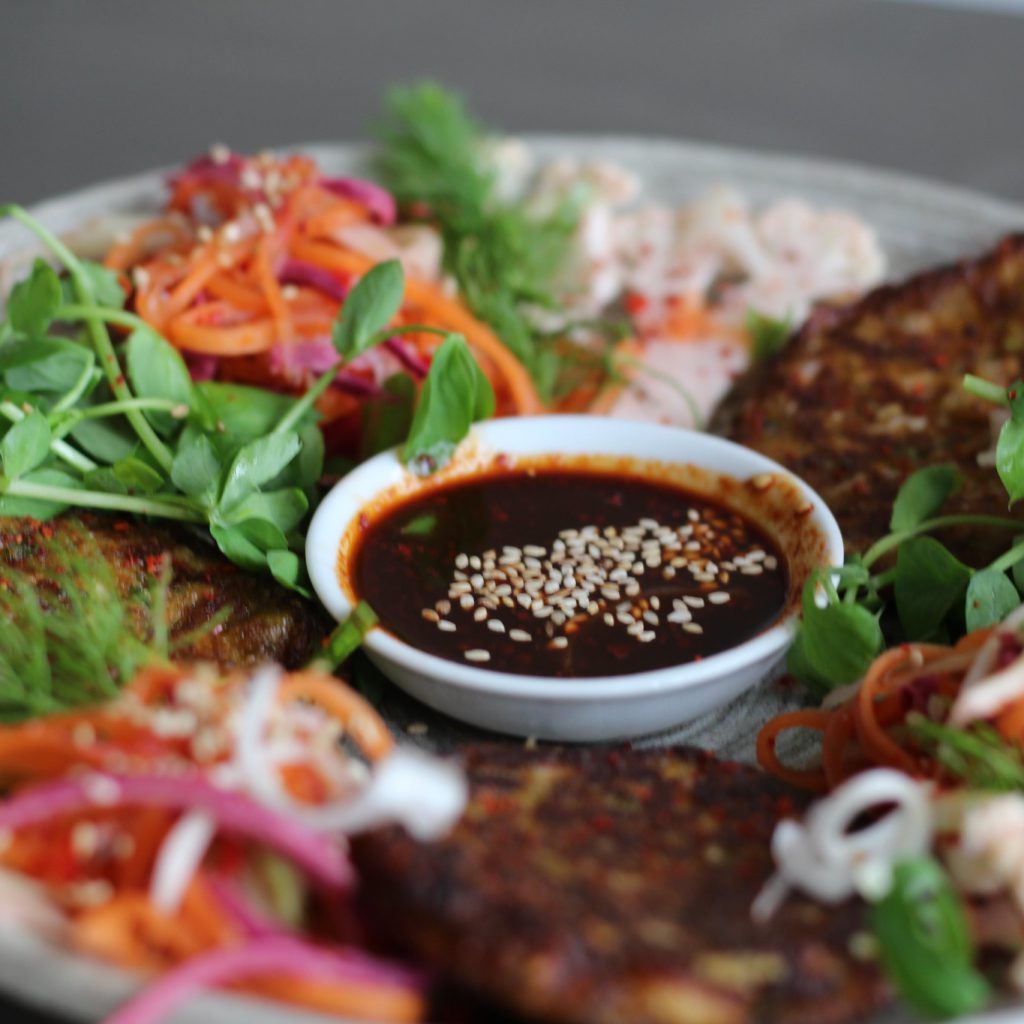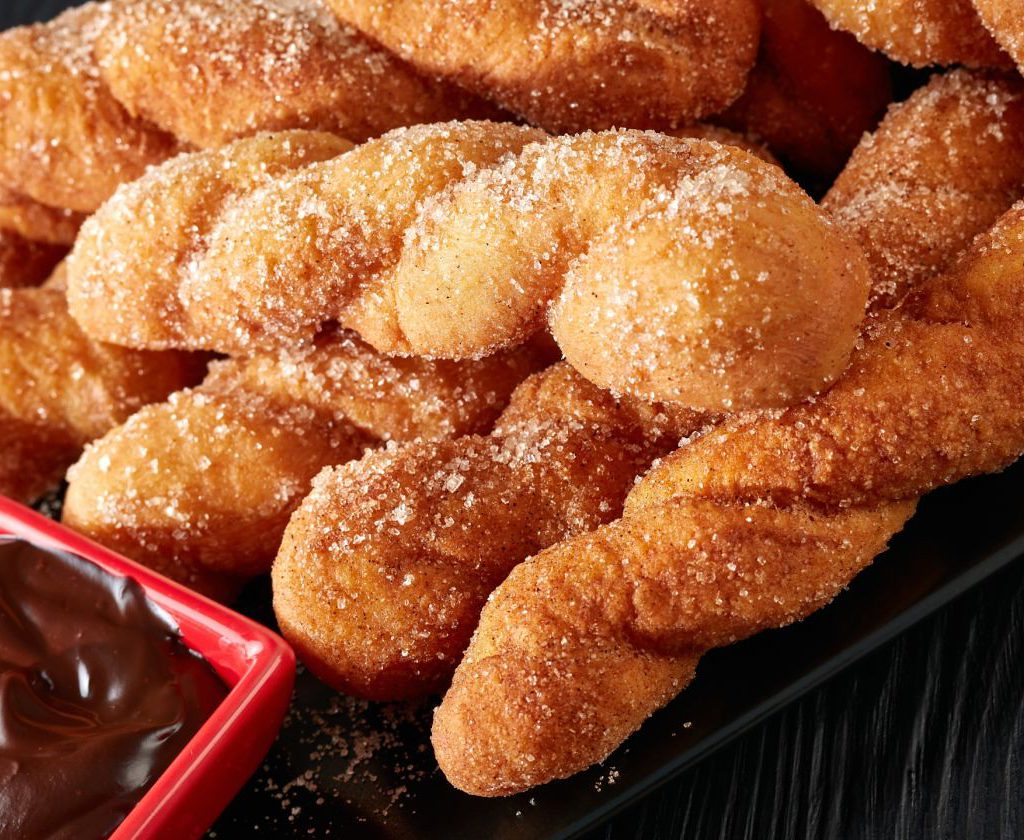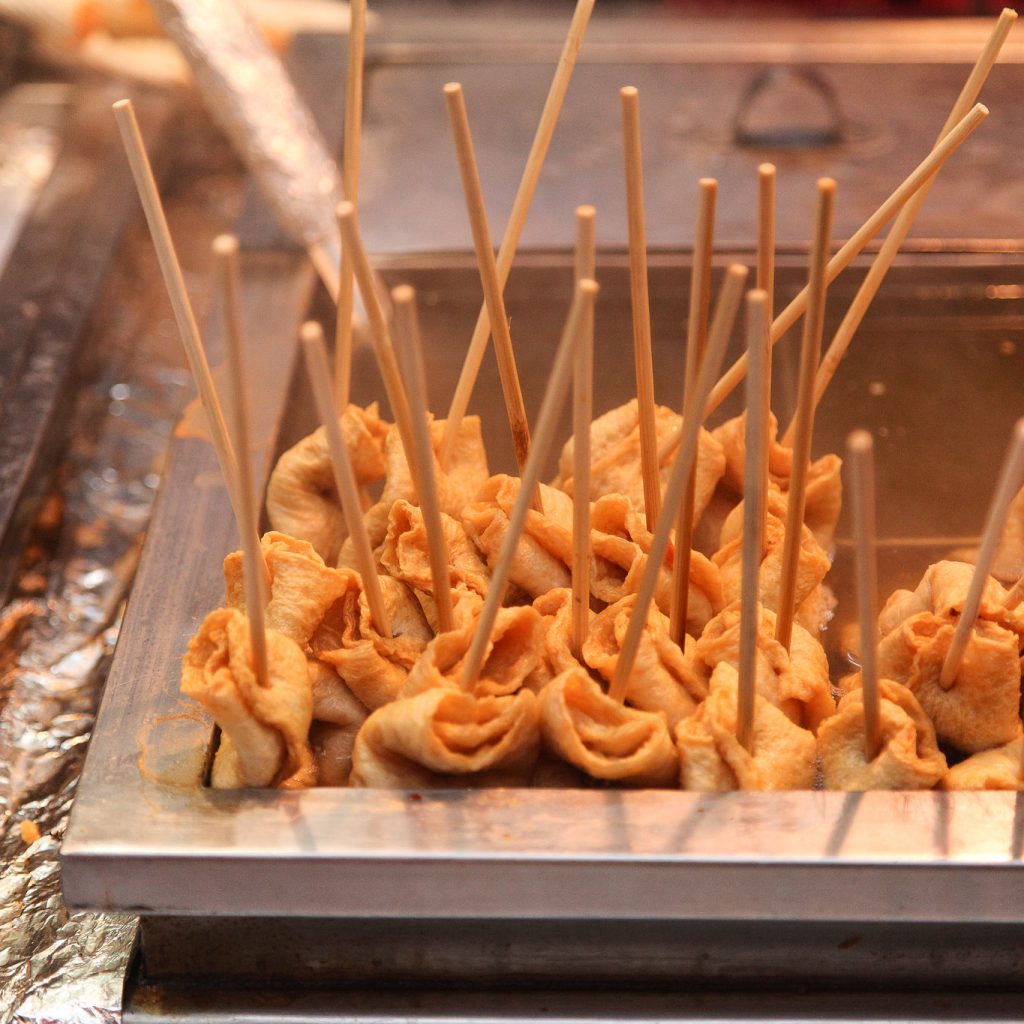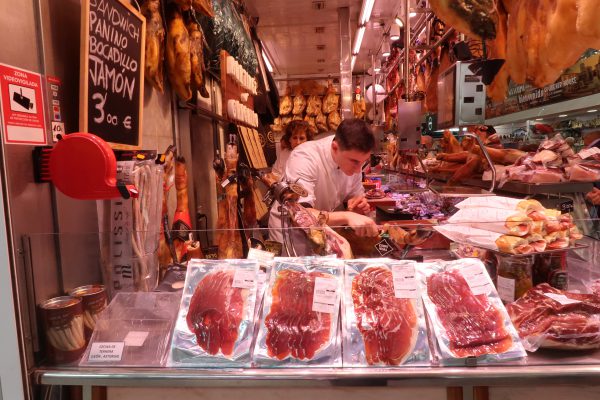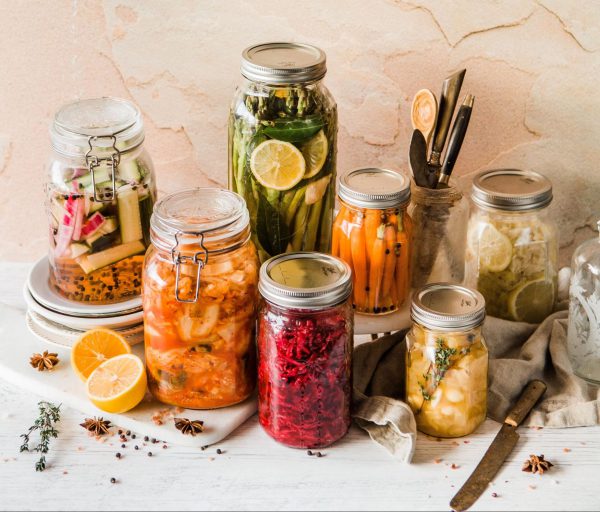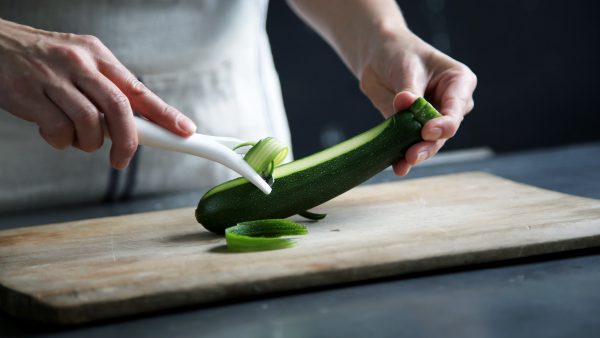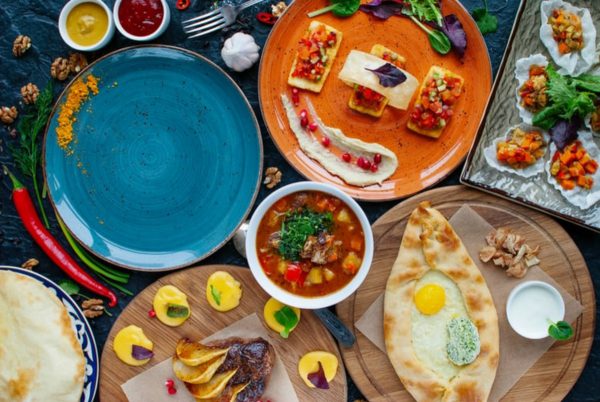Last Updated on February 05, 2023
Whether you’re in Seoul, Busan, or Jeju Island, the busy streets of South Korea abound with all kinds of mouth-watering smells. In fact, many people will tell you that Korean street food has been the highlight of their trip to Korea. After all, it’s affordable, easy to find, and absolutely delicious.
If you’re planning a trip to South Korea – or need some extra motivation to do so – read on. Here are the 20 Korean street food options you must try.
1. Tteokbokki (떡볶이)

You might have seen tteokbokki on TV shows, especially if you’re into k-drama. If not, let us introduce you to these sweet and spicy, chewy, stir-fried rice cakes. They are one of the most popular street foods in South Korea.
Tteokbokki is made of fried rice cakes topped with a sweet and spicy sauce called gochujang. It’s often served with a combination of fishcakes, boiled eggs, scallions, and some sesame seeds on top. You can find these little spicy rice cakes with chili paste, rayeon, cheese, soy sauce, Korean curry sauce, bacon, or even carbonara sauce.
2. Sundae (순대)
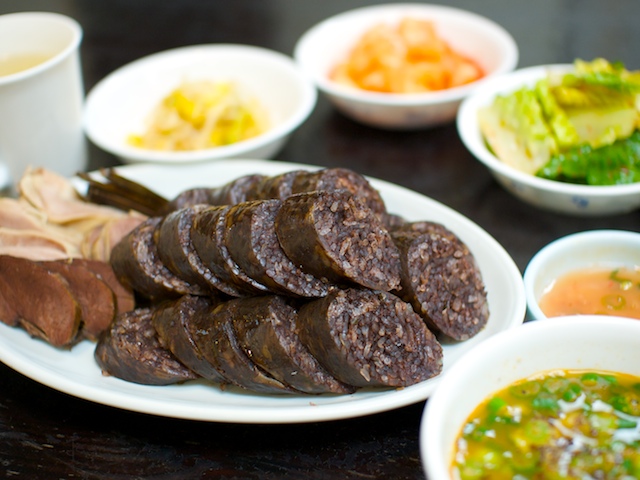
By Louise Yang
Sundae is a type of blood sausage. The classic sundae is made of pork blood, sticky rice, and cellophane noodles, combined with aromatics like miso paste, soybean sprouts, and kimchi. Its lower fat content makes it leaner than boudin noir, the blood sausage ambassador imported into western cuisine from France. It also has quite a chewy texture, thanks to the sticky rice.
The best places to find sundae are the deli sections of Korean markets, where they are freshly prepared and ready to be eaten right away. You can also find sundae made of squid or pollock (a type of fish of the cod family) or even find vegetarian versions.
3. Cupbap (컵밥)
Cupbab roughly translates to “rice in a cup,” which is exactly what this dish represents, plus the exciting toppings! The base of the cupbap is usually fried rice and kimchi. Then you get to choose from different combinations of toppings, such as sausage, ham, beef, chicken, teriyaki, tuna, and eggs.
If you’re in Seoul, make sure to visit the cupbap street in Noryangjin where you’ll find numerous cheap and delicious cupbap stalls. You can have a full meal there for less than 3 dollars!
4. Eomuk (어묵)
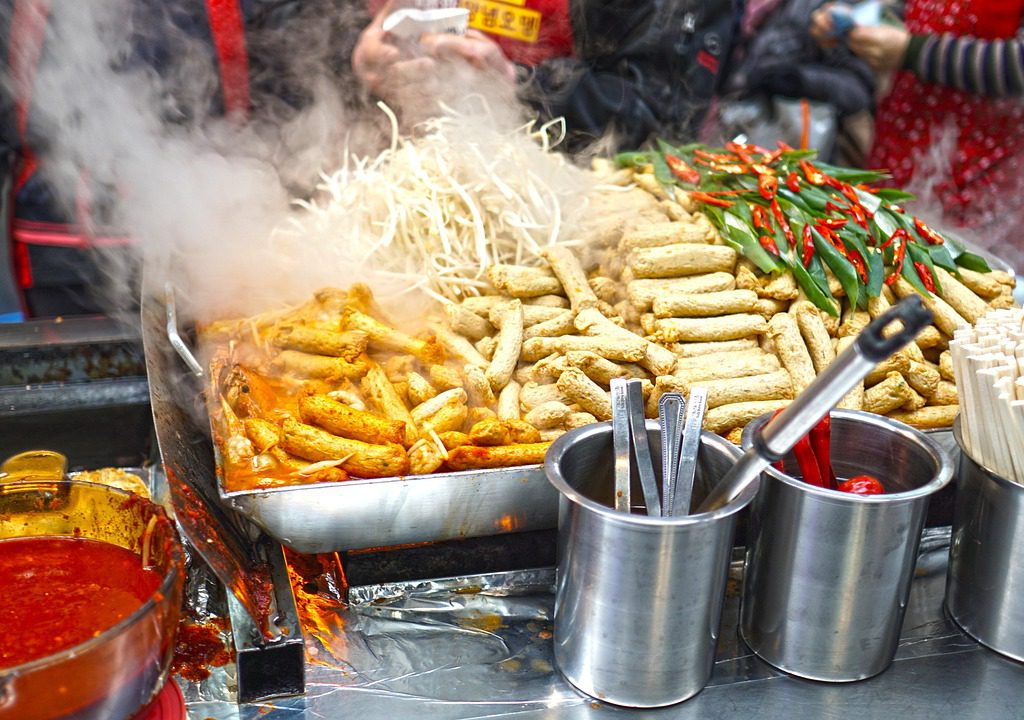
In Korea, fishcake is one of the most popular ingredients. You can add it to a soup (eomuk-tang), serve it as a side dish (eomuk-bokkeum), or add it to kimbap.
Among these different ways of eating fishcake, eomuk tang, fishcake served on a skewer and dipped in a broth, is probably the most popular one. The traditional Korean fishcake is thin and shaped like a rectangle, but alternative shapes and flavors are also available these days.
5. Twigim (튀김)
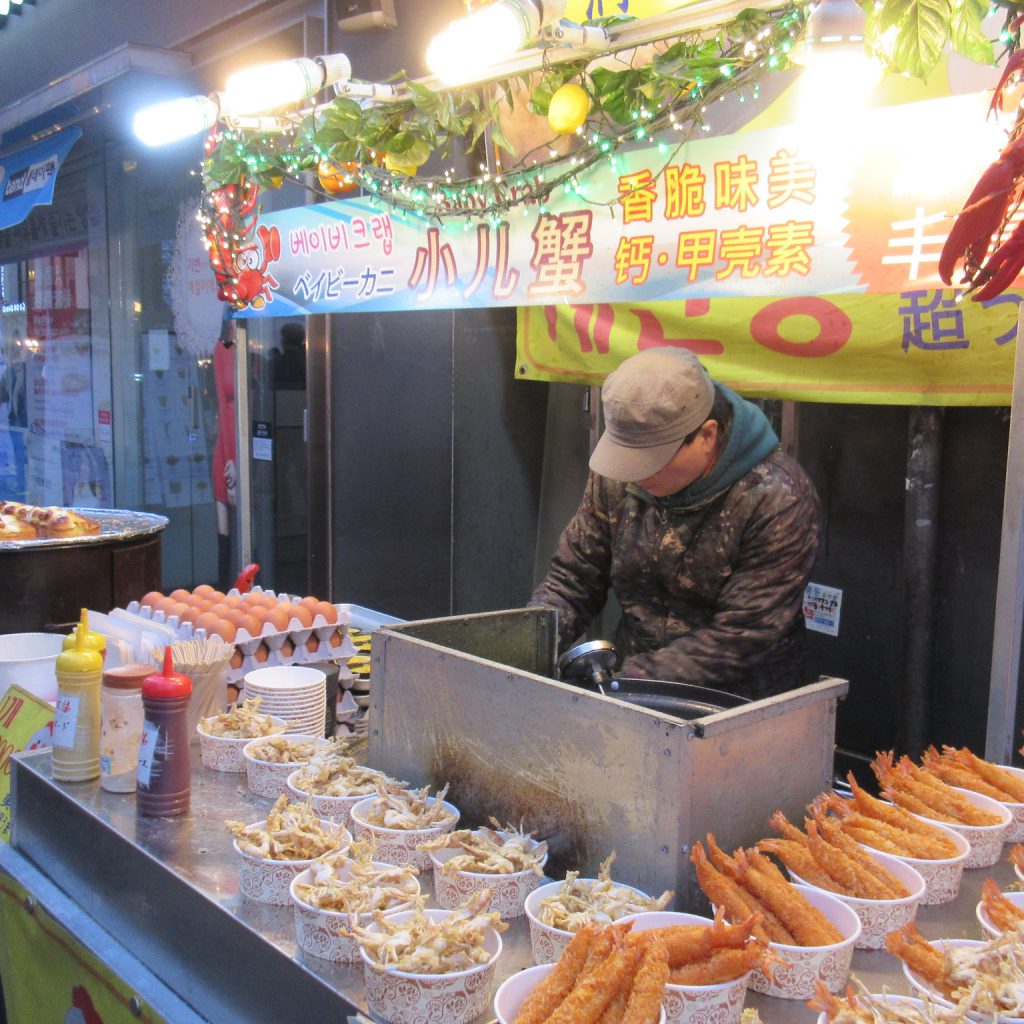
By anokarina
You can think of twigim as the Korean version of Japanese tempura. Just like tempura, twigim can be made by dipping any meat or vegetable into the batter and lightly frying them. As you can imagine, the crunchy golden brown twigim can please anyone – even kids who dislike vegetables won’t notice what they are chowing down on.
Just like other street foods in Korea, twigim is a very cheap dish, and you can typically find a portion for 500 to 2000 Korean won. We strongly recommend trying some varieties from different vendors to get the full experience.
6. Mandu (만두)

Like any other country in the world, Korea also has a traditional dumpling recipe that you can have on the go. Mandu are Korean dumplings typically stuffed with ground pork meat, garlic, shallots, soybean sprouts, tofu, and glass noodles. Optionally, you can have them filled with kimchi too.
Even though Eastern Asian dumpling traditions resemble each other, the use of certain ingredients like kimchi and tofu and the slightly different cooking method differentiate mandu from the rest of the dumplings made in the region, like Japanese gyoza or Chinese dim sum.
7. Gimbap (김밥)
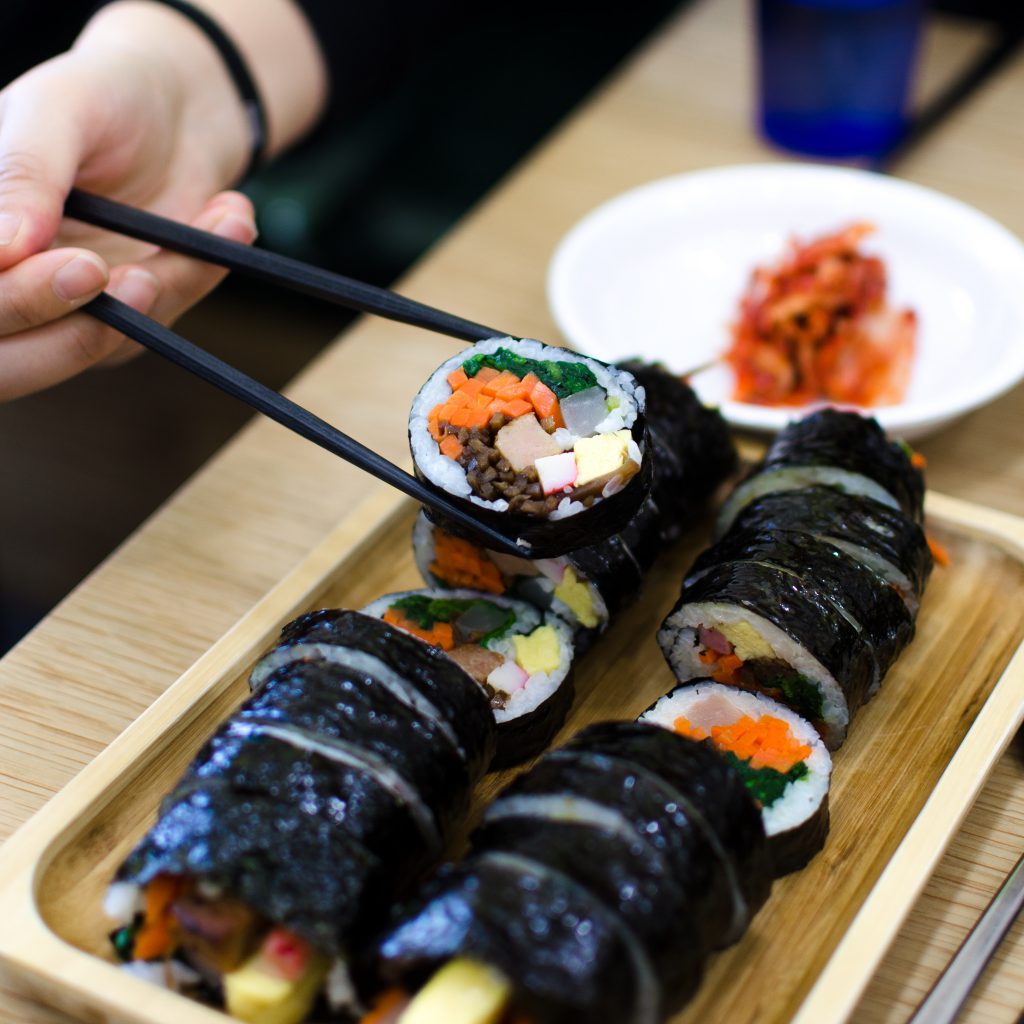
Gimbap is sticky rice rolled up in seaweed and then cut into pieces. When you put it that way, it sounds a lot like Japanese sushi rolls. They certainly look alike, but the main difference is that Japanese sushi rolls are made using vinegar or sake, whereas Korean gimbap is made with sesame oil, giving it a sweet rather than sour or tangy taste. Plus, the meat that goes into the gimbap is almost always cooked, while Japanese maki rolls contain raw seafood.
Gimbap used to be a lunch box recipe in the past. Today, you can try different kinds of this famous street food from stalls all over the country. There is gimbap with bulgogi, tuna mayo, pork, cheese, kimchi, fried shrimp, tonkatsu, tteokgalbi, flying fish, eggs, and wasabi. You can also have fried gimbap, which is especially popular in Busan.
8. Hotteok (호떡)
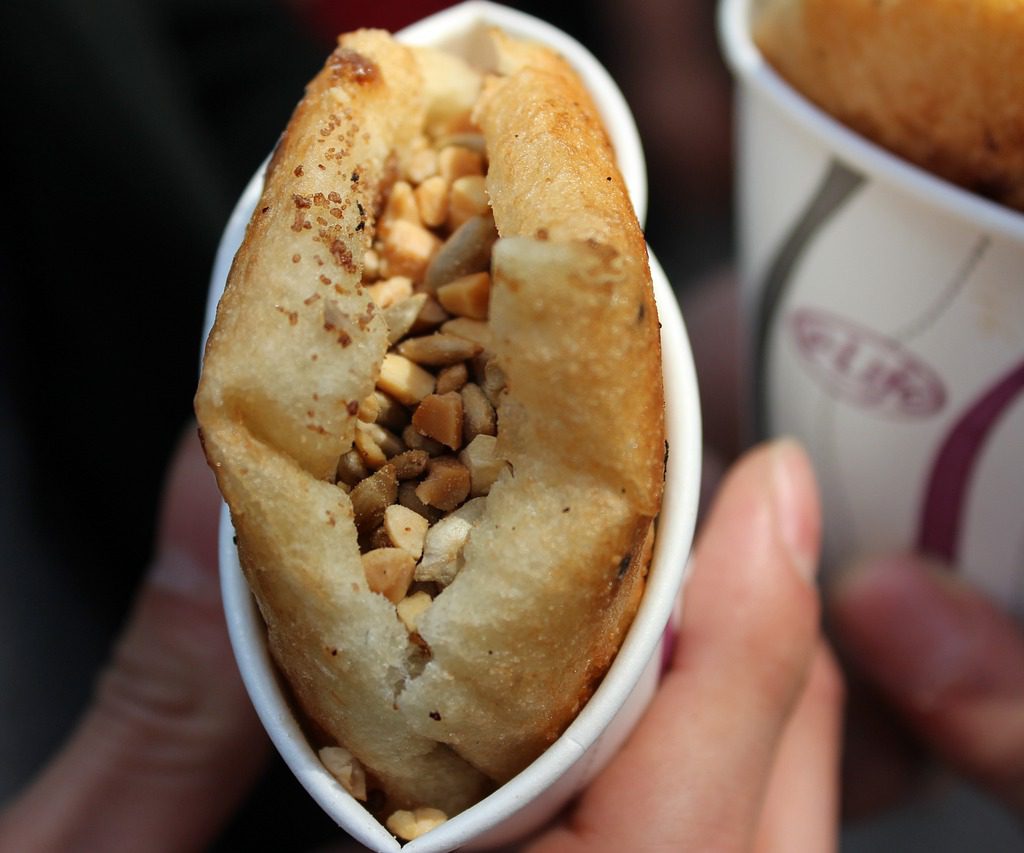
Hotteok is a kind of pastry enjoyed by locals any time of the day. These flat, pan-fried cakes are almost the size of your palm and stuffed with sweet and nutty fillings. Because it’s best to consume them hot — like any other fried dish — there are more hotteok stalls open during the colder months, when you can munch on these small bagel-sized pastries on a tour around the city.
9. Tteok-kkochi ( 떡꼬치)
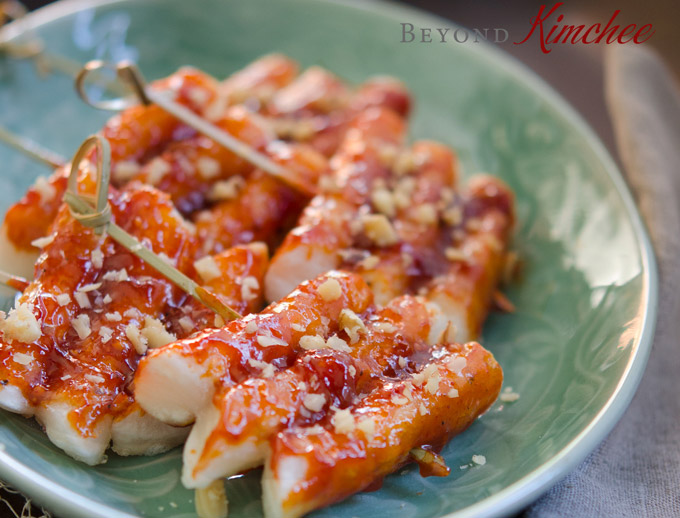
By Ruby Nguyen
Tteok-kkochi is everything you can expect from street food. It’s crunchy, sweet, salty, and a bit spicy. The pieces of fried rice cakes are placed on a skewer and topped with a generous amount of thick sauce made of gochujang (Korean chili paste), soy sauce, brown sugar, honey, sesame oil, and garlic. The amount of aromatics in the sauce really flatters the mildly fried rice.
Depending on the chef’s mood, you can find tteok-kkochi with different flavor combinations, such as hot pepper, anchovies, boiled eggs, scallions, dried seaweed, and more.
10. Gilgeori Toast (길거리 토스트)

By Alpha
Gilgeori toast, or Korean street toast, might be superior to any sandwich made in the rest of the world. The thick slabs of fresh, crispy on the outside, soft on the inside bread are stuffed with freshly cooked omelet, carrot slices, shredded cabbage, ham, sweet ketchup cheese, and scallions.
Even though the recipe started as a quick breakfast that workers used to pick up in the morning on their way to work, nowadays, it has almost been turned into a gourmet meal that you can find both in high-class restaurants and street stalls.
11. Dakgangjeong (닭강정)
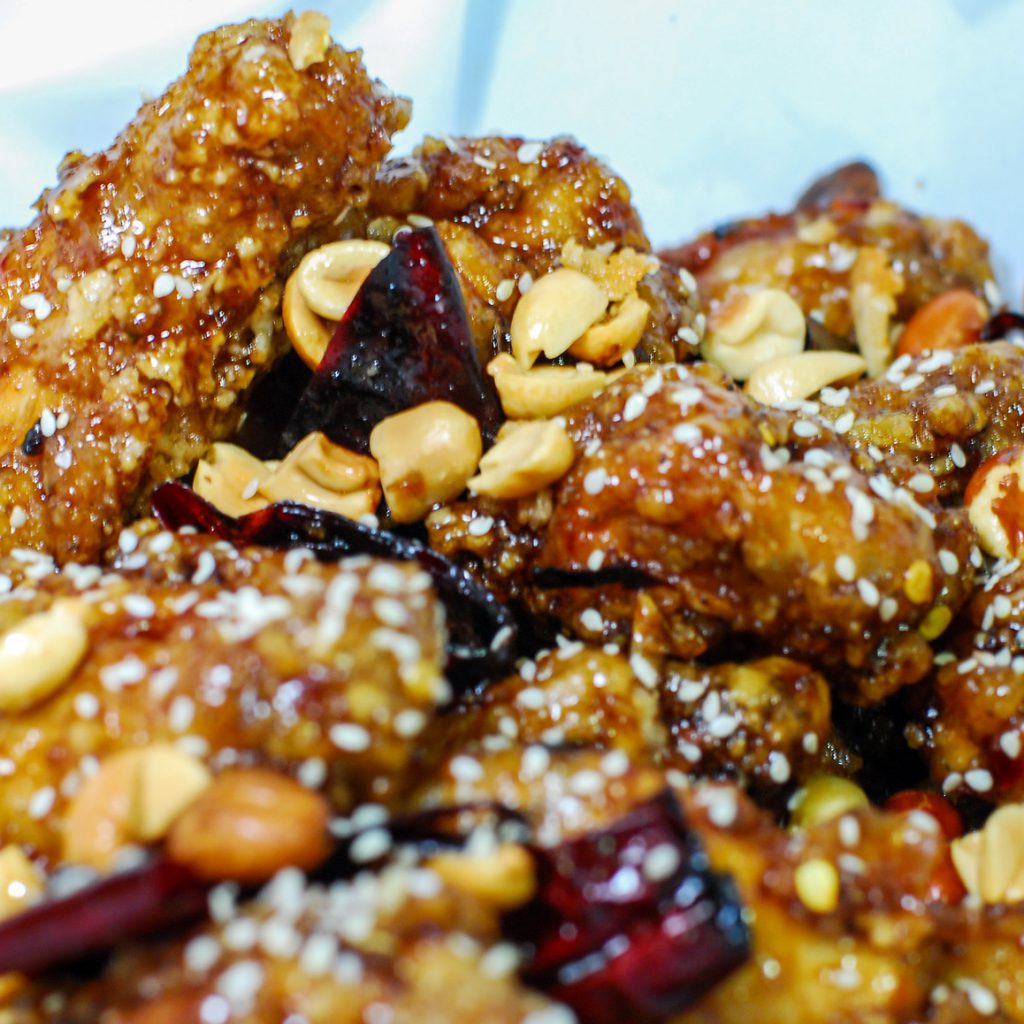
By atlnav
Dakgangjeong is the ultimate double-fried chicken you must try on your visit to Korea. Some of the street stalls are so popular you might have to wait in line for over an hour, but we assure you it’s worth it.
The chicken pieces are dipped in a special batter and deep-fried. For the toppings, the most popular one is a sweet chili sauce that’s thick in texture and rich in flavor. And if you’re the type who cherishes a plate of crispy fried chicken paired with some beer, make sure you check out this chimaek class, where you’ll learn to fry chicken the Korean way and pair different local spirits and beer with your golden brown crunchy chicken bites.
12. Gyeran Ppang (계란빵)
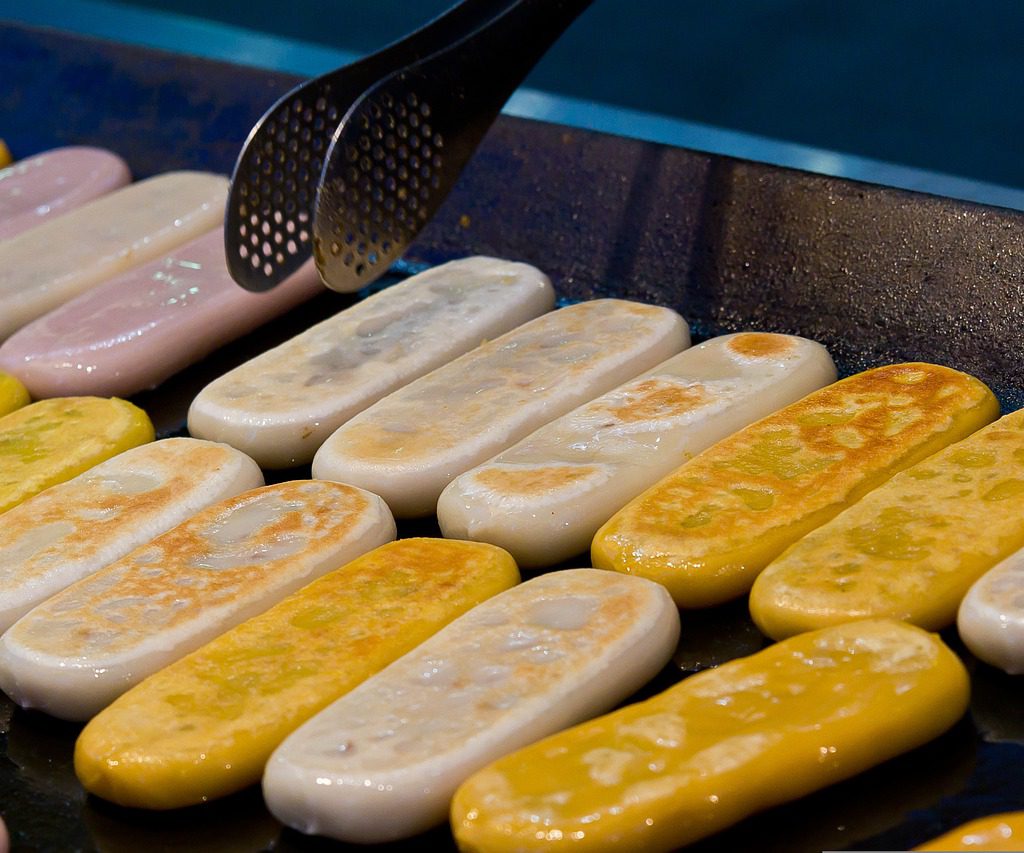
Gyeran ppang is Korean egg bread. It’s a very popular street food dish, especially during the winter. Like any other Korean food, gyeran ppang doesn’t disappoint your taste buds with a basic flavor. The fluffy pieces of bread are sweet and savory, thanks to the harmony of the salty eggs and the sweet bread dough. You can also find a meaty version of gyeran ppang with ham, sausage, or bacon.
13. Bap Burger (밥버거)
If you’ve been in Korea for at least a couple of days, you probably know that bap means rice by now. And if you’ve been a resident of this planet long enough, you must know that burger means, well, burger.
Bap burger is an innovative approach to hamburgers, where you switch buns made of wheat with rice. The bap burger is made of compressed rice buns and a combination of ingredients like tuna, kimchi, spicy pork, chicken, and various vegetables.
14. Bungeoppang (붕어빵)

Bungeoppang translates to “carp fishcakes,” but the only seafood-related thing about this snack is its shape that’s molded into a beautiful carp fish.
Bungeoppang is essentially a sweet fried dough made of eggs, butter, flour, and a tad of sweet spicy red pepper paste. After being cooked by being pressed in the carp-shaped molds, the cakes are filled with a special sweet paste.
You can find different varieties of bungeoppang filled with chocolate, custard, and even sweet potato mousse.
15. Bindaetteok (빈대떡)
Bindaetteok can be translated as “mung bean pancakes.” It’s made by deep frying patties made of ground mung beans (which add a dash of nutty flavor), various vegetables, and/or minced meat.
It’s a dish that’s pretty easy to put together, and when done right it’s hearty and delicious. For these reasons, bindaetteok is a very popular street food throughout South Korea.
16. Kkwabaegi (꽈배기)
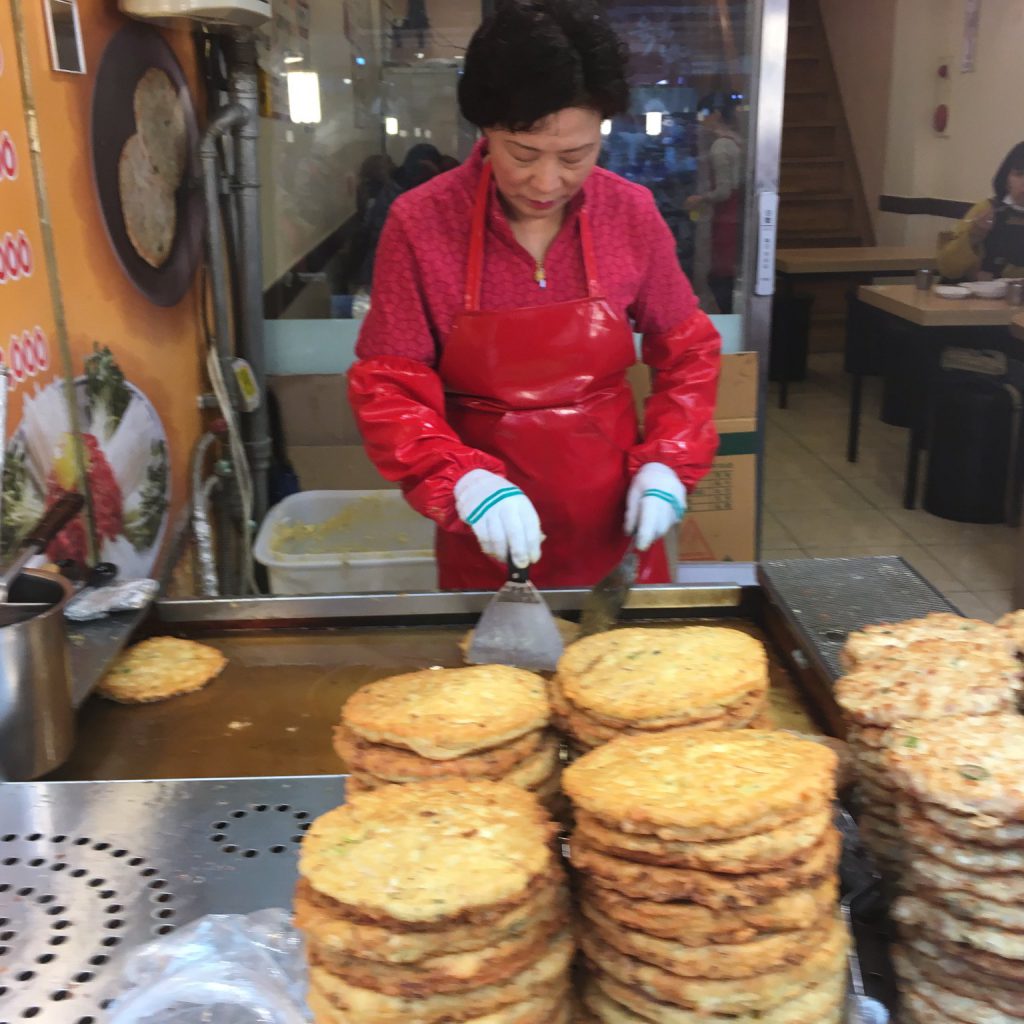
By ccarlstead
Kkwabaegi is a sort of twisted Korean donut. It’s fluffy, sweet, spongy, everything you might expect from a donut. The twist, as usual, is that Korean chefs replace wheat flour with a type of rice product – in this case, glutinous rice flour. The rice flour is mixed with a generous amount of melted butter and deep-fried in oil. Then the hot, crispy kkwabaegi are sprinkled with ground cinnamon and sugar.
Kkwabaegi is a snack that’s best enjoyed when still hot. A perfect snack during your walking tour around the city.
17. Jjinppang (찐빵)
Jjinppang, also known by the name of the popular jjinppang brand hoppang (호빵), is a steamed bun stuffed with red bean paste. The history of jjinppang goes back to the 1300s when it was used as a substitute for meat dumplings, during a time when Koreans followed a strictly vegetarian diet.
Contrary to ancient times, today jjinppang are made with many different ingredients, including meat, different vegetables, and cheese. The buns are served smoking hot, making them a great comfort food to have on a cold winter day.
18. Dakkochi (닭꼬치)
Dakkochi is another popular street snack that consists of pieces of chicken meat grilled on a skewer, usually topped with a sweet and spicy sauce. You can decorate your skewers with salt and seasonings, mustard, ketchup, or mayonnaise.
The dish has a variation called bomb-flavored dakkochi. As the name suggests, this one tests how much spice you can handle, so if you’re not a big fan of spicy food, proceed with caution.
19. Gungoguma (군고구마)
When winter time comes, vendors selling roasted vegetables start to pop up on the streets of Korea. On a cold day, you can grab a cup of smoking hot vegetables to warm your hands and stomach during a walking tour.
Gungoguma are roasted sweet potatoes that are lighter in color and sweeter than the ones we’re used to. The vendors, typically with a wood oven with 6 cylindrical compartments on the wheels, also sell other roasted vegetables like roasted chestnuts (gunbam,군밤) and roasted sweet corn (gunoksusu, 군옥수수).
20. Gamja Hotdog (감자 핫도그)
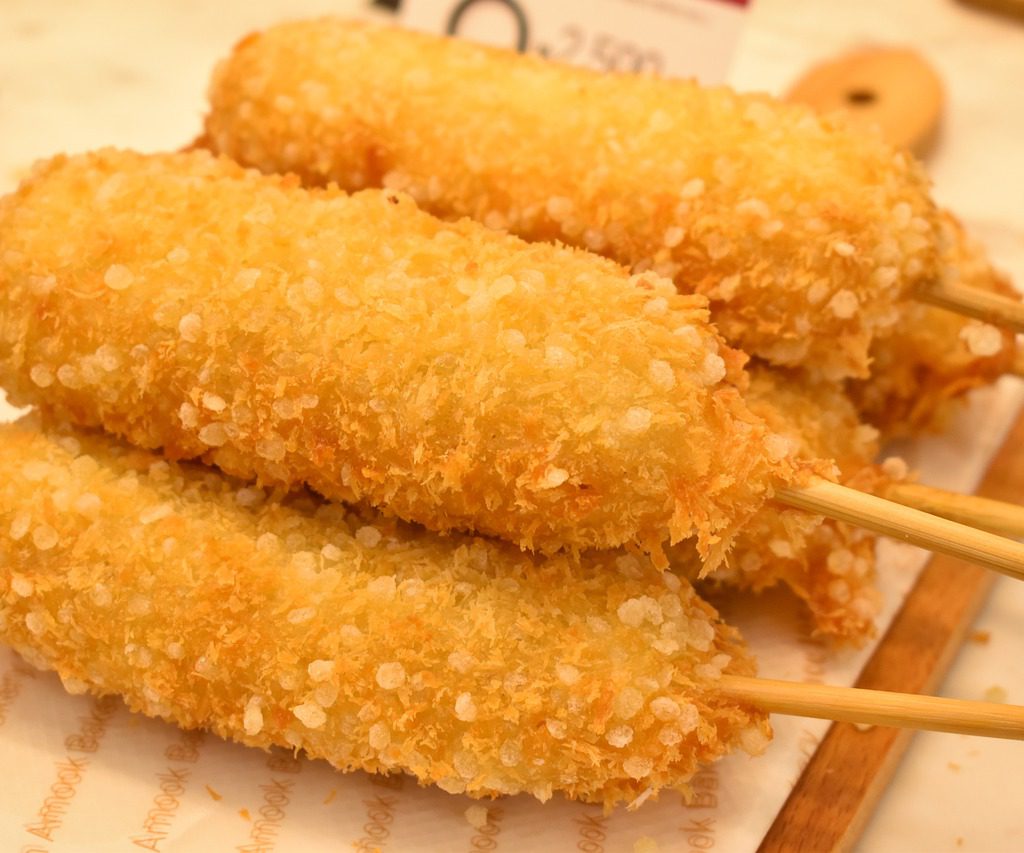
Korean street food mostly consists of healthy snacks, but if you’re looking for a more fatty, less healthy alternative, we have the ultimate junk food for you. Gamja hotdog is a Korean-style hotdog covered with different types of fried potatoes. The hot dogs are usually made of sausage, but you can also find ones made of cheese and sprinkled with sugar.
Over and Out!
The country’s cuisine is definitely one of the many exciting things about South Korea. While trying the many street food options, you can also join a cooking class and get to know the traditional ways of dining in South Korea, get creative with Korean ingredients and learn to cook delicious meals with them, or visit food markets and pick your own produce before learning to prepare iconic South Korean dishes.
Another way to immerse yourself in the traditional cuisine is by attending a workshop where you’ll learn to make iconic Korean staples like kimchi (delicious fermented cabbages), banchan (Korean appetizers), or organic tofu to bring the superpower of Korean ingredients back home with you.


